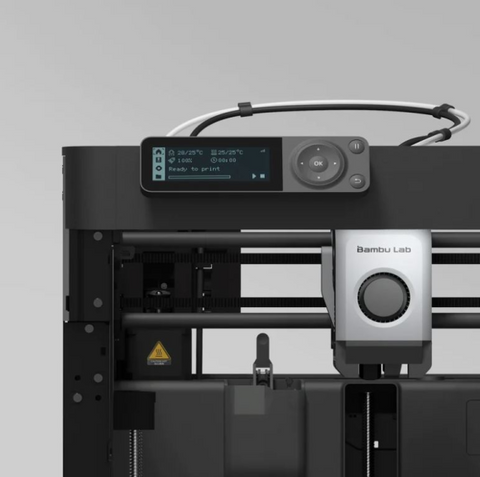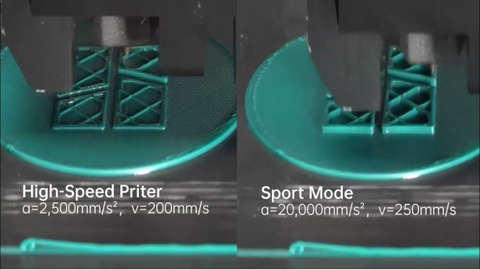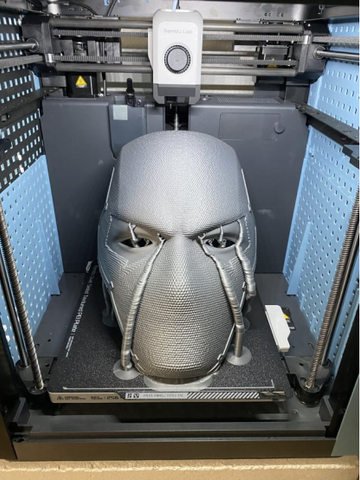
Finding the right 3D printer for your needs can be a daunting task, especially with so many options available on the market. Two popular choices that often come up in discussions are the Bambulab P1P and the Creality K1C. Both printers offer unique features and capabilities that cater to different needs. In this comprehensive comparison, we will dive into the key specifications, performance, and overall user experience of both printers, helping you make an informed decision. Whether you are a professional looking for the best printer for your business or a hobbyist exploring new possibilities, read on to discover the differences between the Bambulab P1P and the Creality K1C.
Features and specifications of Bambulab P1P

The Bambulab P1P is a feature-rich 3D printer that offers a range of specifications designed to meet the needs of both professionals and hobbyists alike. With a generous build volume of 256 x 256 x 256 mm, it provides ample space to bring your creative ideas to life. The printer excels in speed, boasting an impressive maximum print speed of up to 500mm/s, allowing for efficient and timely production of your designs.

The Bambulab P1P is equipped with a sturdy aluminum frame, ensuring stability and precision throughout the printing process. Additionally, it features a high-resolution LCD screen that provides a user-friendly interface for easy navigation and control. With its compatibility to a wide range of filaments, including PLA, ABS, and PETG, the Bambulab P1P offers versatility in material choice.
Features and specifications of Creality K1C

The Creality K1C is a powerful 3D printer designed for both professional and beginner use. Its generous build volume of 220 x 220 x 250mm allows for creating large and detailed objects. The K1C prioritizes printing speed and accuracy, ensuring efficient and high-quality results. A sturdy aluminum frame guarantees stability throughout the printing process. An intuitive touch screen interface simplifies operation, making it user-friendly for all experience levels. Furthermore, the K1C excels at handling a wide range of filaments, including PLA, ABS, TPU, and especially carbon fiber-reinforced filaments, offering exceptional material versatility for your projects. Stay tuned as we explore how the K1C's features compare to the Bambulab P1P.
Is bambu Lab better than creality?
Feeling overwhelmed by the vast array of 3D printers on the market? Don't worry, you're not alone! Two leading brands, Bambu Lab and Creality, are popular choices, but picking the right one depends on what you want to achieve. Both offer excellent machines, but they cater to different styles of makers.

Bambu Lab is all about making 3D printing easy and efficient. Their user interfaces are incredibly intuitive, and their printers integrate seamlessly with filament management systems, taking the guesswork out of the process. Plus, they boast lightning-fast print speeds – up to 500mm/s – which can significantly cut down on waiting times. If you have ambitious projects in mind, Bambu Lab often offers printers with generous build volumes, giving you more space to create. However, these advanced features come at a higher cost, and Bambu Lab's closed-source firmware might not be ideal for tinkerers who enjoy customizing their machines.

Creality, on the other hand, offers a wider range of printers at various price points. This makes them a fantastic option for budget-conscious beginners or anyone just starting their 3D printing journey. A big advantage of Creality printers is their open-source firmware. This allows experienced users to dive deeper and fine-tune settings, giving them more control over the printing process. While Creality's user interfaces might require a bit more getting used to compared to Bambu Lab, the potential for customization can be a major plus. It's also worth noting that Creality printers might have slightly slower print speeds than Bambu Lab's top models.
|
There are a few other things to consider depending on your specific needs. If you plan to print with high-temperature filaments like ABS or nylon, Creality's K1C with its fully enclosed chamber might be a better choice. In terms of filament compatibility, while both brands offer support for common filaments like PLA, ABS, and PETG, the K1C goes a step further. It can handle flexible TPU filaments with ease and even excels with carbon fiber-reinforced filaments, which can be tricky for some Bambu Lab printers.
Conclusion and recommendation
Choosing the right 3D printer can feel like a daunting task. Both Bambu Lab and Creality offer excellent machines, but they excel in different areas. Here's a quick recap to help you decide:
For the Speed Demon and Tech Savvy: If cutting-edge features, user-friendly interfaces, and blazing-fast printing speeds are your top priorities, Bambu Lab might be your perfect match. Their larger build volumes and integrated ecosystems cater to ambitious projects. However, be prepared for a higher price tag and a closed-source system.
For the Budget-Conscious Maker and Tinkerer: If affordability, open-source customization, and wider filament compatibility are important to you, Creality could be the way to go. Their extensive range offers options for beginners and experienced users alike. The ability to delve into settings and modifications makes them ideal for those who enjoy tinkering. However, Creality's user interfaces might require a bit more learning, and their print speeds may be slightly slower than Bambu Lab's top models.
Ultimately, the best choice depends on your individual needs and printing goals. Consider what features are most important to you, whether you prioritize ease of use or customization, and weigh the budget against the desired functionality. With careful consideration, you'll find the perfect 3D printer to unlock your creativity and bring your ideas to life!

